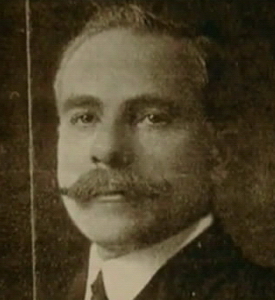Alfredo Salafia
Alfredo Salafia (1869 – 1933) was a pioneering embalmer and taxidermist from Italy who gained fame for his mummification techniques, most notably the preservation of the Rosalia Lombardo, one of the best-preserved mummies in the world, located in the Catacombs of the Capuchins in Palermo. Salafia's innovative methods marked a significant advancement in the field of embalming, contributing to the study of mummification processes and the preservation of human remains.
Early Life and Education[edit | edit source]
Alfredo Salafia was born in Palermo, Sicily, in 1869. From a young age, he showed a keen interest in the natural sciences, which led him to study chemistry and anatomy. His early career was marked by his work as a taxidermist, where he developed skills that would later influence his embalming techniques.
Career and Innovations[edit | edit source]
Salafia's work as an embalmer began in the late 19th century. He developed a unique embalming fluid, the composition of which was a closely guarded secret until recently discovered in his handwritten notes. The formula, consisting of formalin, zinc sulfate, alcohol, salicylic acid, and glycerin, was revolutionary at the time and is considered a precursor to modern embalming fluids.
His most famous work, the mummification of Rosalia Lombardo, a two-year-old girl who died in 1920, showcases his skill. Rosalia's body remains one of the best-preserved mummies, with her features still intact nearly a century later. This achievement has earned Salafia a place in the history of embalming and mummification.
Legacy[edit | edit source]
Alfredo Salafia's contributions to the field of embalming have had a lasting impact. His techniques demonstrated the potential for chemical embalming to preserve human remains with a lifelike appearance, contributing to both the fields of forensic science and funerary practices. Today, he is remembered not only for his preservation of Rosalia Lombardo but also for his broader contributions to the advancement of embalming techniques.
Death[edit | edit source]
Salafia passed away in 1933 in Palermo. His legacy continues through the preserved bodies that showcase his work and through the ongoing study of his methods by contemporary scientists and embalmers.
Search WikiMD
Ad.Tired of being Overweight? Try W8MD's physician weight loss program.
Semaglutide (Ozempic / Wegovy and Tirzepatide (Mounjaro / Zepbound) available.
Advertise on WikiMD
|
WikiMD's Wellness Encyclopedia |
| Let Food Be Thy Medicine Medicine Thy Food - Hippocrates |
Translate this page: - East Asian
中文,
日本,
한국어,
South Asian
हिन्दी,
தமிழ்,
తెలుగు,
Urdu,
ಕನ್ನಡ,
Southeast Asian
Indonesian,
Vietnamese,
Thai,
မြန်မာဘာသာ,
বাংলা
European
español,
Deutsch,
français,
Greek,
português do Brasil,
polski,
română,
русский,
Nederlands,
norsk,
svenska,
suomi,
Italian
Middle Eastern & African
عربى,
Turkish,
Persian,
Hebrew,
Afrikaans,
isiZulu,
Kiswahili,
Other
Bulgarian,
Hungarian,
Czech,
Swedish,
മലയാളം,
मराठी,
ਪੰਜਾਬੀ,
ગુજરાતી,
Portuguese,
Ukrainian
Medical Disclaimer: WikiMD is not a substitute for professional medical advice. The information on WikiMD is provided as an information resource only, may be incorrect, outdated or misleading, and is not to be used or relied on for any diagnostic or treatment purposes. Please consult your health care provider before making any healthcare decisions or for guidance about a specific medical condition. WikiMD expressly disclaims responsibility, and shall have no liability, for any damages, loss, injury, or liability whatsoever suffered as a result of your reliance on the information contained in this site. By visiting this site you agree to the foregoing terms and conditions, which may from time to time be changed or supplemented by WikiMD. If you do not agree to the foregoing terms and conditions, you should not enter or use this site. See full disclaimer.
Credits:Most images are courtesy of Wikimedia commons, and templates, categories Wikipedia, licensed under CC BY SA or similar.
Contributors: Prab R. Tumpati, MD

